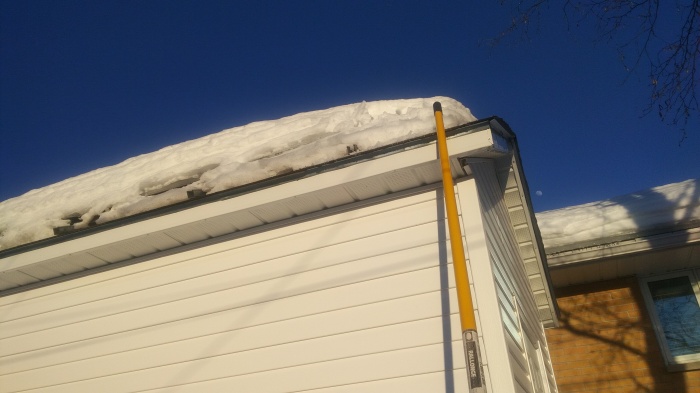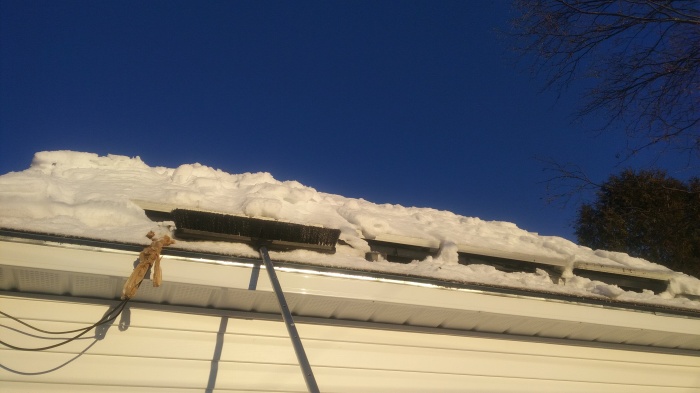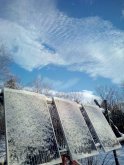I find with climate change we get way more weird weather patterns here now including freezing rain or wet snow. This ends up causing a crust on the panels which cannot be brushed off like regular snow. I have a 400w system on my shed which I just turn off completely in winter but it would be cool to run power to the house and run it year round. Last year I sorta had it running year round to keep the battery topped up but no load. Every morning (if I remembered) I would snow shoe to the shed and use a long broom to take snow off. At one point in December though we got freezing rain, so I was not able to broom it right down to the glass for the rest of the year as it just made a crust.
This is basically as good as it got:

That is not regular snow but a more crusty ice/snow, so it's not physically removable without serious brute force, like on a car windshield, but I don't want to use that kind of force on panels.
How do you guys deal with this? I eventually want to live off grid so this is more or less a pilot project. My first thought is to change the incline of the panels so they are vertical, downside with a roof mount is that they will act as a sail and put a lot of stress on the roof when there are wind gusts. Another thought is to run thin wire behind them like a heated floor application and basically melt the ice away as needed, but this would require a much beefier battery. Ideally I should just need to melt the under layer and I should be able to get it off with the broom. In an off grid application and a much larger array I could replace the wire with pex tubing and glycol and run it through a boiler.
For general snow removal been toying with some kind of automated brush on a rail system that sweeps them hourly, maybe this would take care of freezing rain too by wiping them down? Downside is the bristles would get all icy after.
Anyway just curious what others have done to deal with this so that they can be used year round. I know it's also possible to backfeed power into the panels but I don't really want to mess with that. A mistake could be disastrous.







